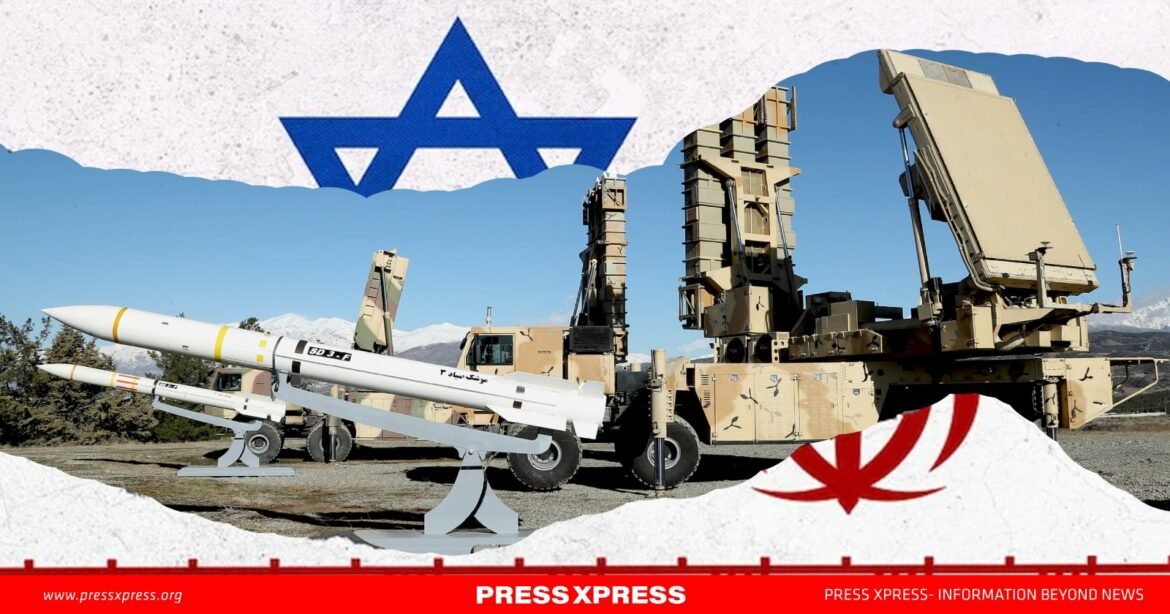As tensions escalate between Iran and Israel, with missile exchanges marking a renewed period of hostility, both nations have advanced their air defense systems to guard against aerial threats.
Israel’s Multi-Layered Defense Systems
Israel has long relied on a robust, layered defense strategy to counter missile threats from regional adversaries, notably Iran. With recent missile attacks, Israel’s defenses have been actively engaged, including its first-ever use of the Arrow system in response to a surface-to-surface missile launched from the Red Sea area.
Arrow Defense System
The Arrow-2 and Arrow-3 interceptors, jointly developed by Israel and the United States, are Israel’s primary defense against long-range ballistic missiles. The Arrow-3 operates beyond the atmosphere, targeting high-altitude threats, while the Arrow-2 intercepts closer to Earth. This system is a vital part of Israel’s missile defense, with Israel Aerospace Industries as the main contractor and Boeing producing the interceptors.

David’s Sling
David’s Sling fills Israel’s mid-range defense requirements, intercepting ballistic missiles and other aerial threats from a range of 100 to 200 kilometers. It is a product of Israel’s collaboration with the U.S.-based RTX Corporation (formerly Raytheon) and Rafael Advanced Defense Systems, also capable of downing aircraft, drones, and cruise missiles.

Iron Dome
The Iron Dome, operational since 2011, serves as Israel’s frontline defense against short-range rockets and mortars, particularly those fired by Hamas. The system, supported by U.S. funding, is equipped to assess and neutralize only those projectiles on course to impact populated areas, allowing others to fall harmlessly. A naval variant introduced in 2017 provides protection for sea-based assets, and the Iron Dome’s capabilities have expanded to cover rockets within a range of 4 to 70 kilometers.

Laser-Based Interceptors
To reduce operational costs, Israel is developing a laser-based system intended to counter rockets and drones at a fraction of the price of conventional interceptors, projected at $2 per engagement.

U.S. THAAD System
In a show of support, the U.S. recently deployed the THAAD (Terminal High Altitude Area Defense) system to Israel, adding another layer to the country’s missile defense against short, medium, and intermediate-range threats.

Iran’s New “Zoubin” System: A Counter to Israel’s Iron Dome
Iran’s recently unveiled Zoubin air defense system, described as an “Iranian Iron Dome,” is strategically deployed around Tehran and key sites. Built with mobility and rapid repositioning in mind, the Zoubin is mounted on a 6×6 truck chassis and can provide a 360-degree defensive range, offering flexibility to meet evolving threats.

Specifications and Capabilities of Zoubin
The Zoubin system’s radar can detect up to 100 targets within a 30 km radius and engage them at a range of 20 kilometers. With eight missiles in each launcher, the system is engineered to counter simultaneous threats, an essential feature for swarming drone attacks, loitering munitions, and low-flying fighter jets.
Designed to address modern battlefield challenges, the Zoubin is particularly effective against drones and cruise missiles, both of which require agile interception capabilities due to their low-altitude flight paths and erratic trajectories. The system also defends against precision artillery and shells, crucial for protecting urban and strategic areas from close-range assaults.
Strategic Significance of Zoubin in Iran’s Defense
The Zoubin reflects Iran’s emphasis on self-sufficient defense technology and addresses gaps in traditional long-range systems. Drawing on its long-range Bavar-373 system, the Zoubin’s compact design and deployment around high-value areas highlight Iran’s commitment to securing its airspace against the latest aerial threats.
Conclusion
Israel and Iran’s recent advancements in missile defense systems underscore a strategic arms competition. Israel’s layered defenses are complemented by the U.S. THAAD system, while Iran’s Zoubin offers a versatile and self-reliant approach, enhancing its capacity to counter a range of low-altitude threats in an increasingly volatile region.


